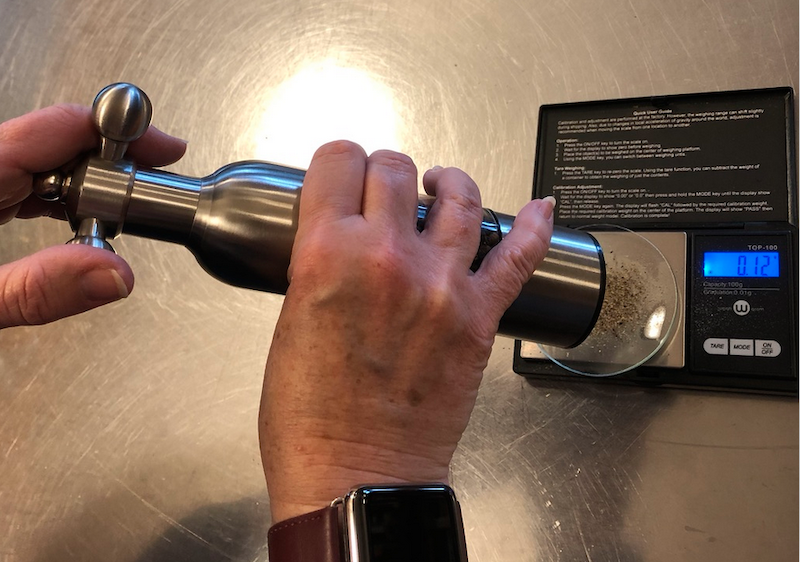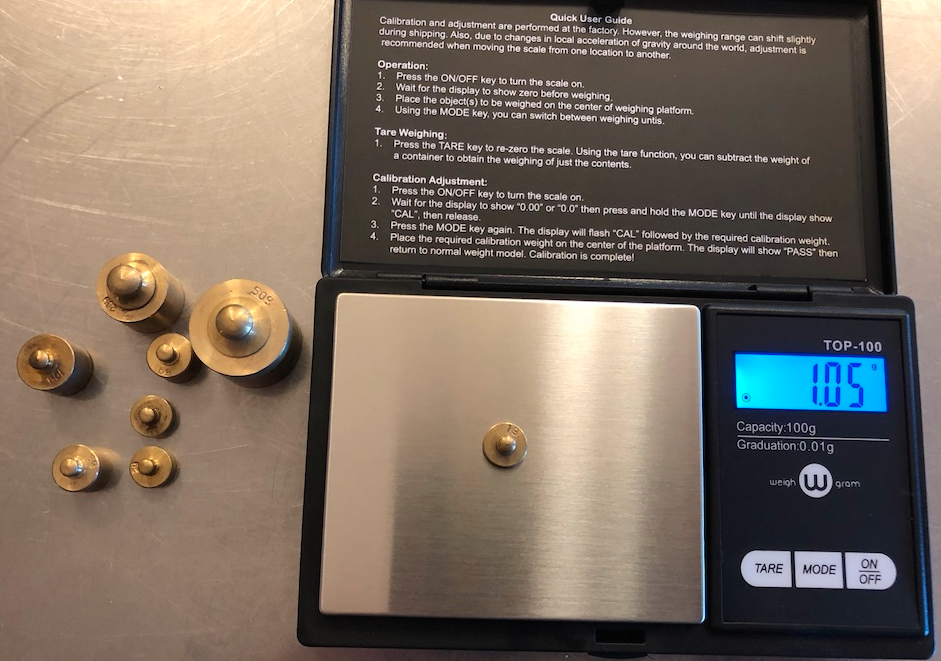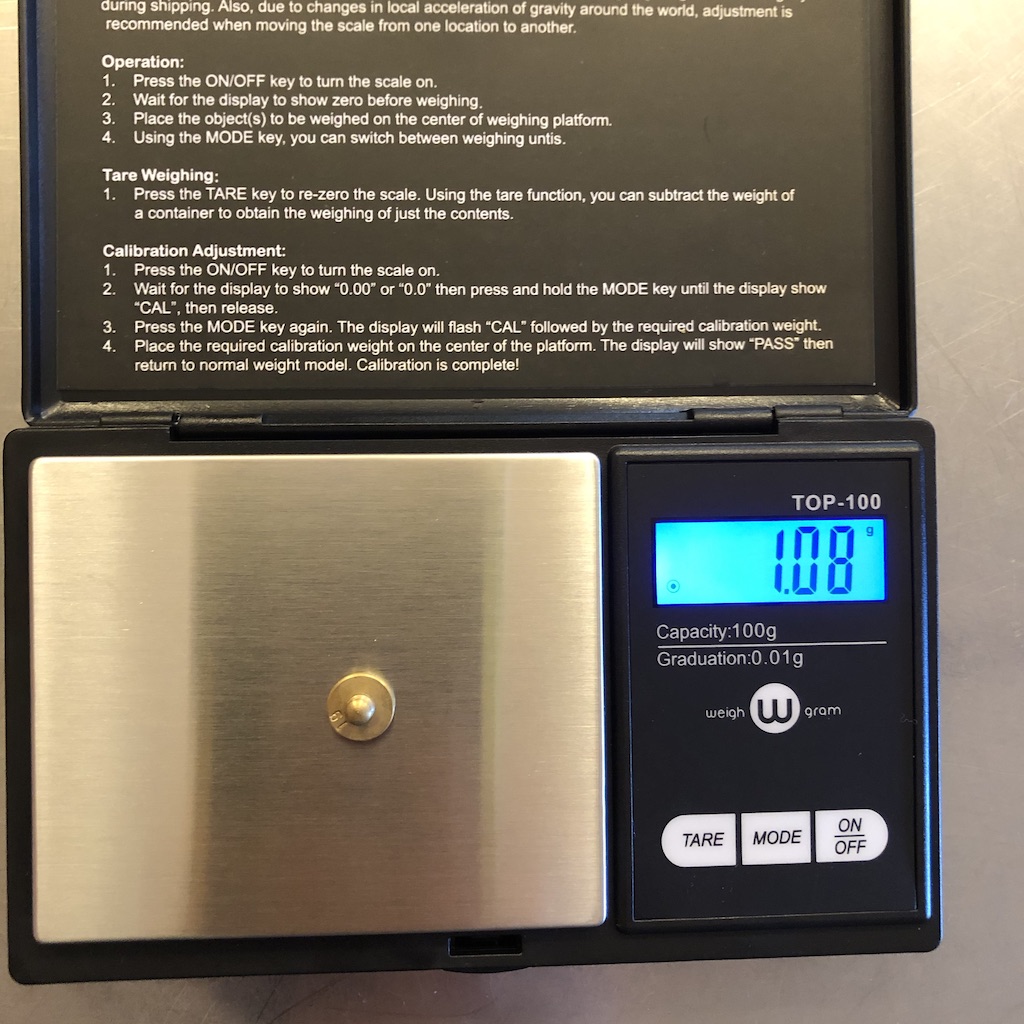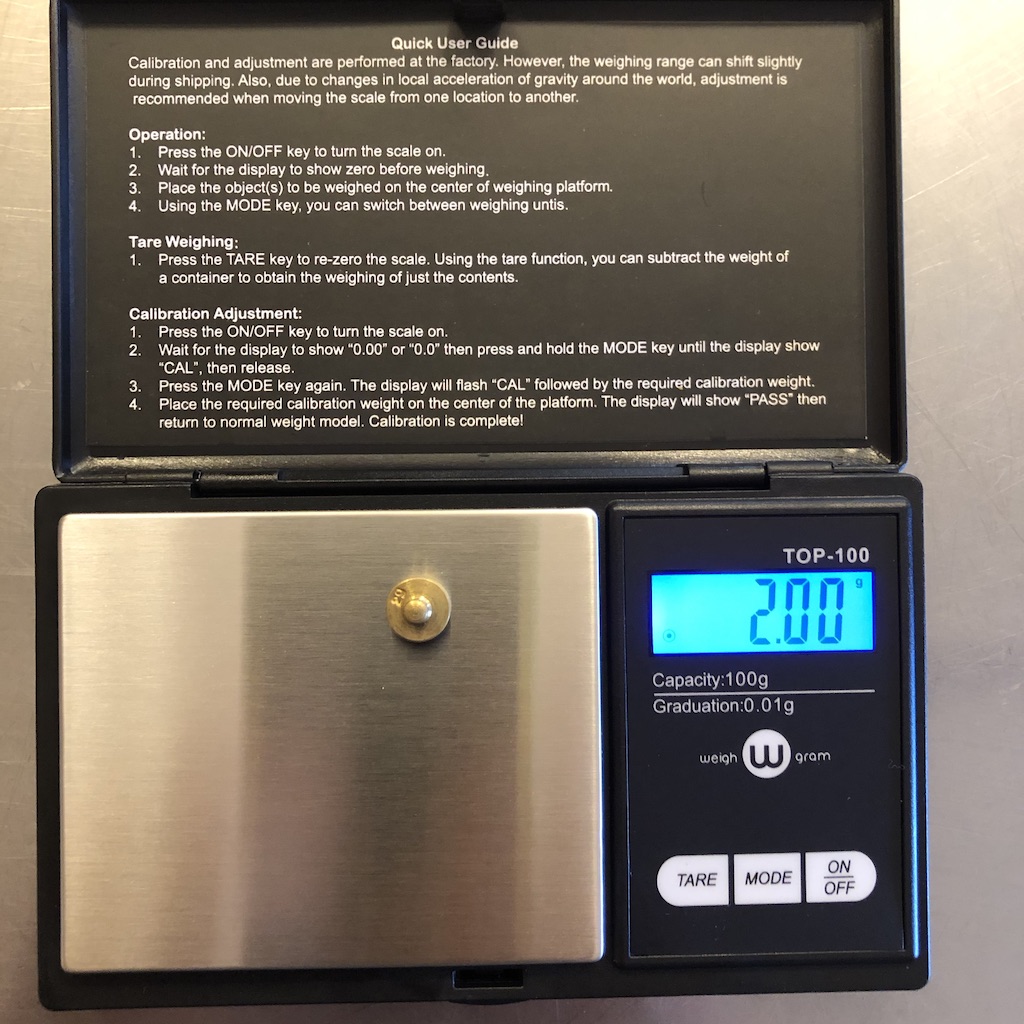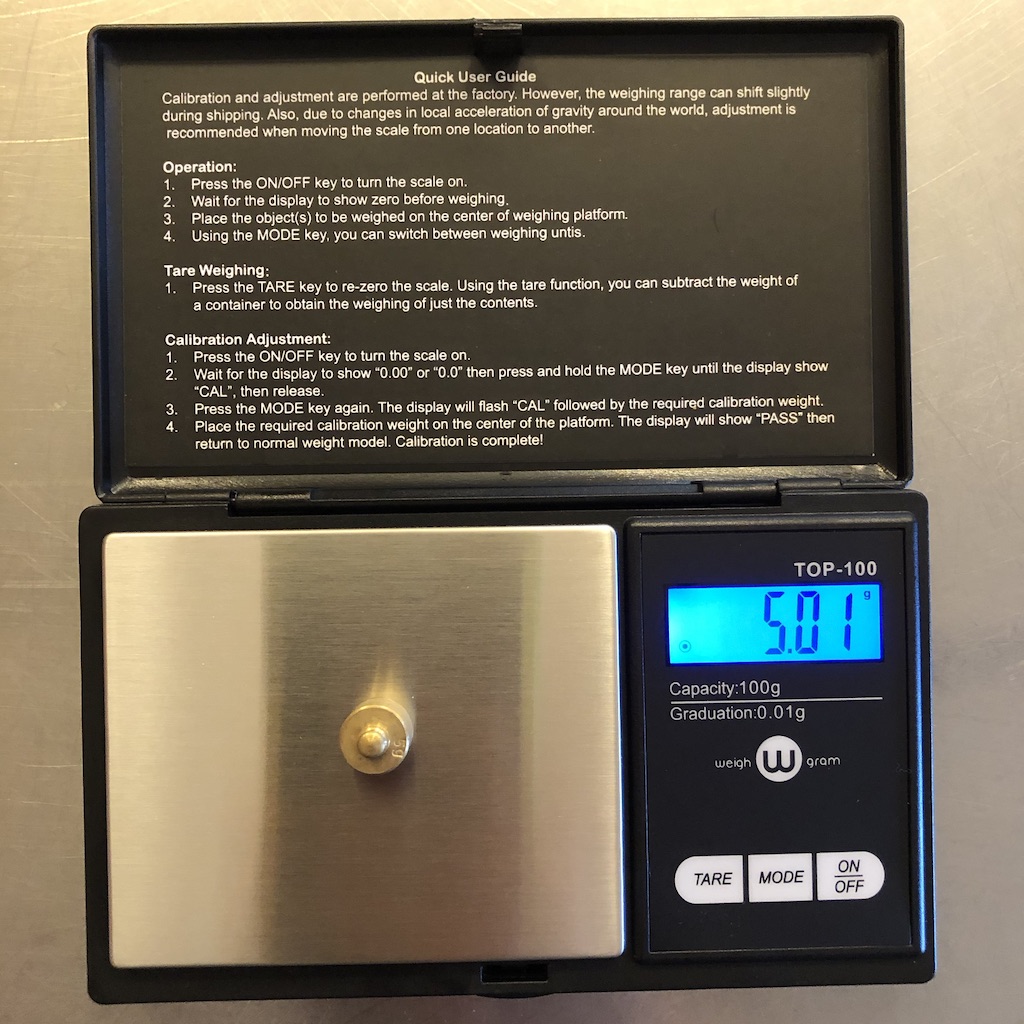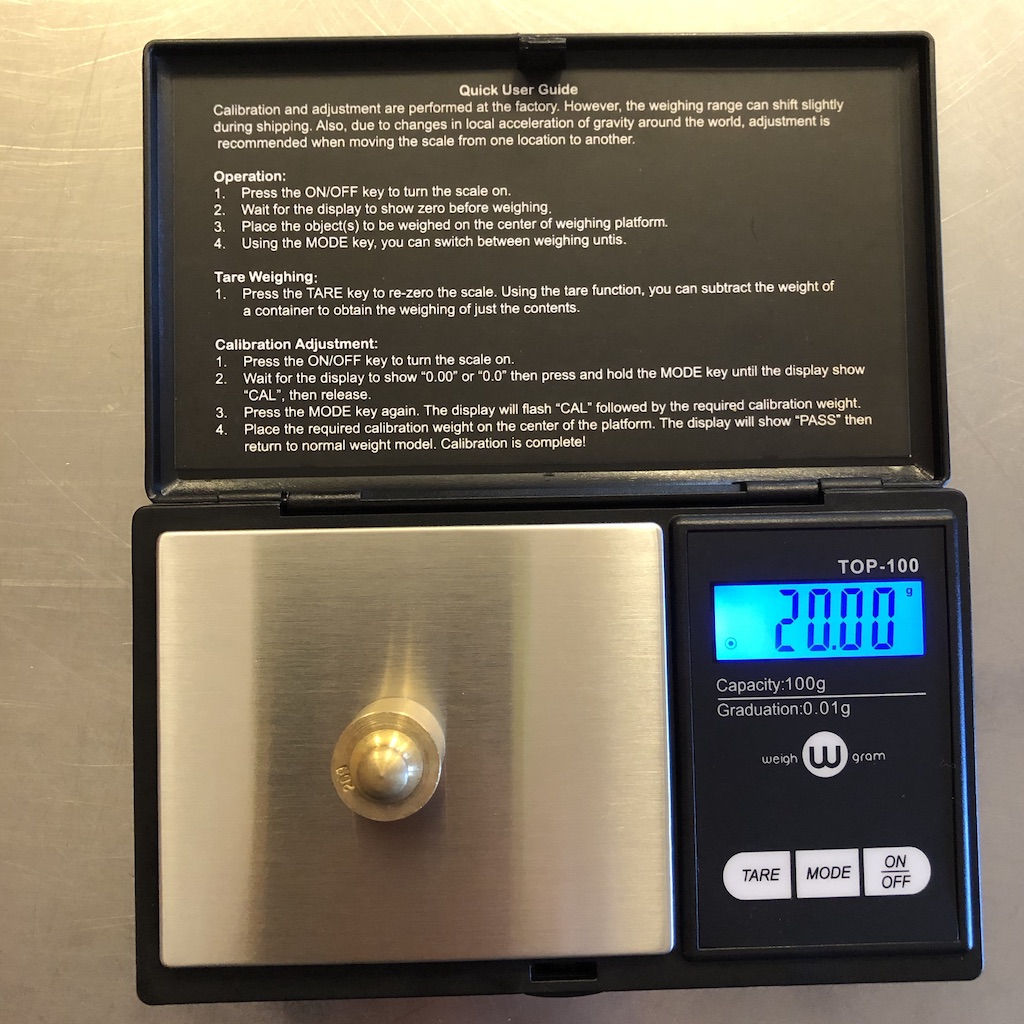While the ingredients in cooked dishes are measured in tens or hundreds of grams per portion, herbs and spices are usually called for in fractions of a gram.
While no peer-reviewed data exists, it seems unlikely that studies can maintain reproducability if ordinary ingredients can be measured to a tolerance of +/- 5 grams and spices to +/- 0.1 grams.
This ad-free article is made possible by the financial support of the
Center for Research on Environmental Chemicals in Humans: a 501(c)(3) non-profit.
Please consider making a tax-deductible donation for continued biomedical research.
All measurements of spices and other foods must be measured by weight, not volume.
Precision and efficiency require that measurements be made by weight rather than volume.
Volumetric measurements involve many opportunities for error: density and packing of dry ingredients will affect volume.
For example, recipes may call for a teaspoon of salt, a half teaspoon of ground cinnamon or a tablespoon of dried ground basil. The actual mass of those volumes can vary depending upon the moisture content, the granularity of the substance, how densely (or lightly) compacted they are. But a gram is a gram regardless and will make for a more precise measure.
So too, are potential errors in the reading of liquid meniscus levels, accidental over- or under-pouring, inability to completely empty measuring vessels of viscous materials. This is particularly significant in a busy kitchen.
With very minor adjustments, measurements by weight adapt easily to the often frantic activity of cooking, especially in high-production catering or institutional food preparation facilities contracted for large dietary intervention studies.
Spices: big impact in small quantities means precise measurement required
In addition to being taste enhancers herbs and spices (and minerals like salt) are powerful in small amounts and exert substantial physiological effects out of proportion to their concentrations. That’s why they need to be measured to tighter tolerances than other foods. This link offers more details about that.
Scale calibration
Institutionally calibrated scales are preferred, but sometimes not available to every researcher. In that case, a set of gram weights can help determine the accuracy of commercially available scales.
In the example below, after using a wide variety of solid weights and combinations of them, the accuracy this scale for measurements for small quantities such as salt and spices, is roughly +/- 0.02 to +/- 0.03. That is well within the tolerance of error in a working kitchen.
The same calibration method should be used — with heavier weights on larger capacity scales — for non-spice foods.
Right-click any image, below, to view a larger version.

